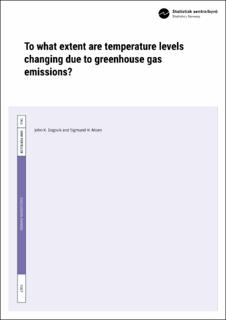| dc.contributor.author | Dagsvik, John K. | |
| dc.contributor.author | Moen, Sigmund H. | |
| dc.date.accessioned | 2023-10-05T09:57:42Z | |
| dc.date.available | 2023-10-05T09:57:42Z | |
| dc.date.issued | 2023-09-25 | |
| dc.identifier.issn | 1892-753X | |
| dc.identifier.uri | https://hdl.handle.net/11250/3094425 | |
| dc.description.abstract | Weather and temperatures vary in ways that are difficult to explain and predict precisely. In this
article we review data on temperature variations in the past as well possible reasons for these
variations. Subsequently, we review key properties of global climate models and statistical analyses
conducted by others on the ability of the global climate models to track historical temperatures.
These tests show that standard climate models are rejected by time series data on global
temperatures. Finally, we update and extend previous statistical analysis of temperature data
(Dagsvik et al., 2020). Using theoretical arguments and statistical tests we find, as in Dagsvik et al.
(2020), that the effect of man-made CO2 emissions does not appear to be strong enough to cause
systematic changes in the temperature fluctuations during the last 200 years. | en_US |
| dc.language.iso | eng | en_US |
| dc.publisher | Statistisk sentralbyrå | en_US |
| dc.relation.ispartofseries | Discussion Paper;No. 1007 | |
| dc.rights | Navngivelse 4.0 Internasjonal | * |
| dc.rights.uri | http://creativecommons.org/licenses/by/4.0/deed.no | * |
| dc.subject | Global climate models | en_US |
| dc.subject | Climate change | en_US |
| dc.subject | Temperature analysis | en_US |
| dc.subject | Fractional Gaussian noise | en_US |
| dc.subject | Long-range dependence | en_US |
| dc.title | To what extent are temperature levels changing due to greenhouse gas emissions? | en_US |
| dc.type | Working paper | en_US |
| dc.rights.holder | © Statistisk sentralbyrå | en_US |
| dc.source.pagenumber | 122 | en_US |

